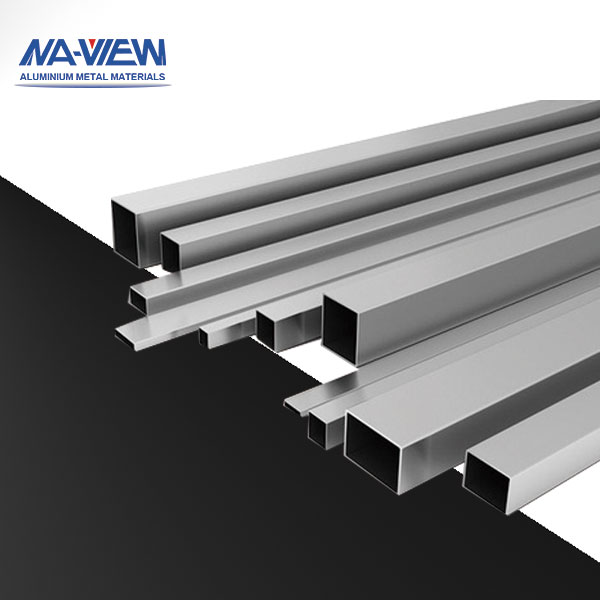In modern manufacturing and construction, custom aluminium extrusions play a crucial role in creating unique, high-performance solutions tailored to specific applications. This passage explores the detailed process of developing custom aluminium extrusions, from initial design concepts to the final production stages, highlighting the precision, technology, and innovation involved.
Custom aluminium extrusions are profiles designed and manufactured to meet specific requirements that standard extrusions cannot fulfill. These bespoke profiles can be tailored in terms of shape, size, and mechanical properties to suit a wide range of applications, from architectural elements and automotive parts to electronics enclosures and industrial components. The ability to customize extrusions allows for greater design flexibility, improved functionality, and enhanced performance in the final product.
Naview, a professional custom extrusion manufacturer, exemplifies the expertise and dedication required to produce top-tier custom aluminium extrusions, ensuring that clients receive products that meet their exact specifications and exceed expectations.
The Design Phase
The process of creating custom aluminium extrusions begins with a detailed design phase. This involves collaboration between the client, designers, and engineers to define the precise requirements and specifications of the extrusion. Key considerations during this phase include the desired shape and dimensions of the profile, the mechanical and thermal properties required, and any specific surface finish or treatment needs.
Advanced design software, such as computer-aided design (CAD) programs, is typically used to create detailed 3D models of the proposed extrusion. These models allow for precise visualization and analysis of the profile, enabling designers to make necessary adjustments and optimizations before moving forward with production. The use of CAD also facilitates the creation of accurate technical drawings and specifications that will guide the manufacturing process.
Material Selection
Selecting the appropriate aluminium alloy is a critical step in the production of custom extrusions. Different alloys offer varying properties in terms of strength, ductility, corrosion resistance, and conductivity. The choice of alloy depends on the specific application and performance requirements of the extrusion. Commonly used alloys include the 6000 series, known for its excellent machinability and corrosion resistance, and the 7000 series, which offers higher strength for more demanding applications.
Die Creation
Once the design and material selection are finalized, the next step is the creation of the extrusion die. The die is a specialized tool that shapes the aluminium as it is forced through it during the extrusion process. Creating the die is a highly precise task that requires skilled craftsmanship and advanced machining techniques. The die must be fabricated to exacting standards to ensure the final extruded profile matches the desired design with minimal variation.
Modern die-making often involves the use of CNC (computer numerical control) machines, which can produce highly accurate and complex die shapes. The die is typically made from hardened steel to withstand the high pressures and temperatures involved in the extrusion process.
The Extrusion Process
With the die ready, the actual extrusion process can begin. This involves heating aluminium billets to a temperature where the metal becomes pliable but not molten, typically around 900°F to 925°F (480°C to 500°C). The heated billets are then forced through the die under high pressure using a hydraulic press, emerging on the other side as a continuous profile that mirrors the die’s shape.
The extrusion process can produce profiles with a wide range of cross-sectional shapes, from simple solid bars and tubes to intricate multi-void profiles. The extruded profiles are immediately cooled using air or water to maintain their shape and mechanical properties.
Post-Extrusion Treatments
After extrusion, the profiles undergo various treatments to enhance their properties and prepare them for final use. These treatments can include:
- Aging or Heat Treatment: This process strengthens the aluminium by precipitating out alloying elements.
- Anodizing: This electrochemical process increases corrosion resistance and allows for the application of decorative finishes.
- Powder Coating: This provides a durable, attractive finish available in a wide range of colors.
Quality Control and Inspection
Quality control is an essential aspect of the extrusion process. Each profile is carefully inspected to ensure it meets the specified dimensions, tolerances, and mechanical properties. Advanced inspection techniques, such as laser scanning and coordinate measuring machines (CMMs), are often used to verify the accuracy of the extruded profiles. Any deviations from the design specifications are addressed through adjustments in the extrusion process or die design.
Custom Aluminium Extrusions in Practice
The versatility of custom aluminium extrusions makes them suitable for a vast array of applications. In the architectural sector, they are used to create unique facades, window frames, and structural components that enhance both the aesthetics and functionality of buildings. In the automotive industry, custom extrusions contribute to lightweight, high-strength components that improve fuel efficiency and performance. In electronics, they provide enclosures and heat sinks that ensure efficient operation and longevity of devices.
Conclusion
The journey from design to production of custom aluminium extrusions is a complex and meticulous process that requires collaboration, precision, and advanced technology. Each step, from initial design through material selection, die creation, extrusion, post-treatment, and quality control, plays a vital role in producing high-quality, tailored solutions for diverse applications.
As industries continue to demand innovative and efficient materials, custom aluminium extrusions will remain at the forefront of modern manufacturing, offering unparalleled design flexibility and performance.
